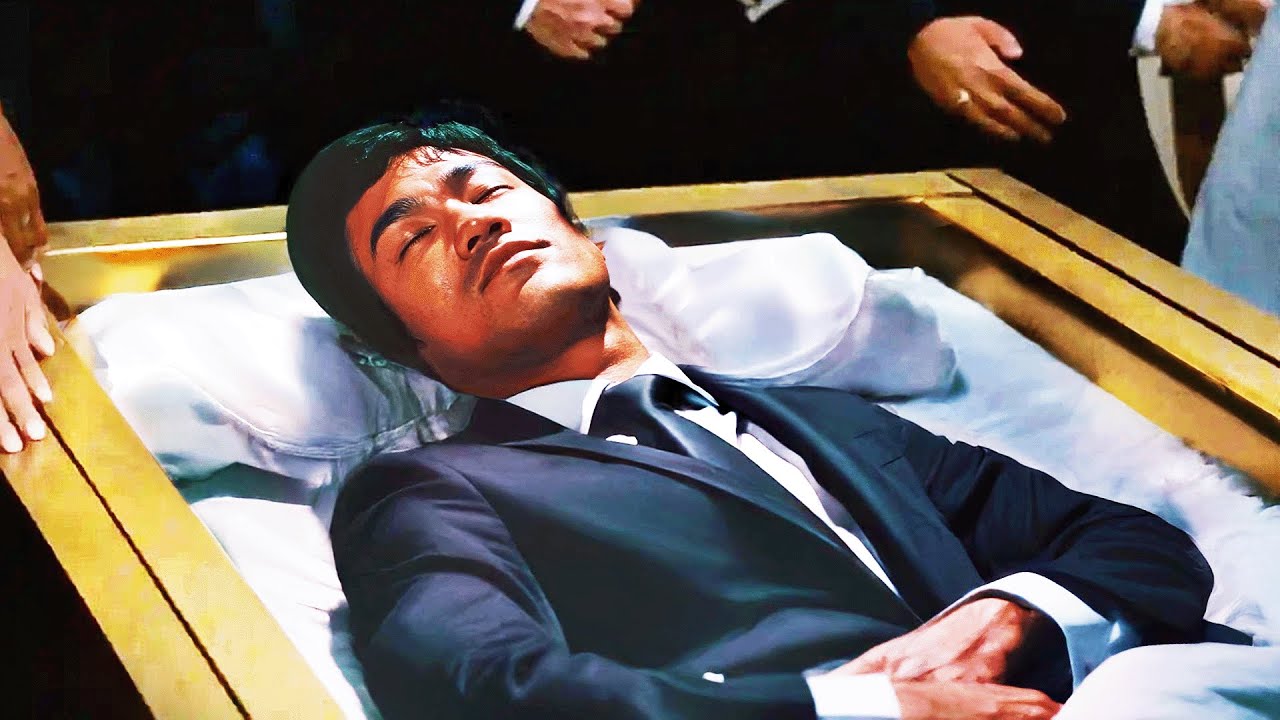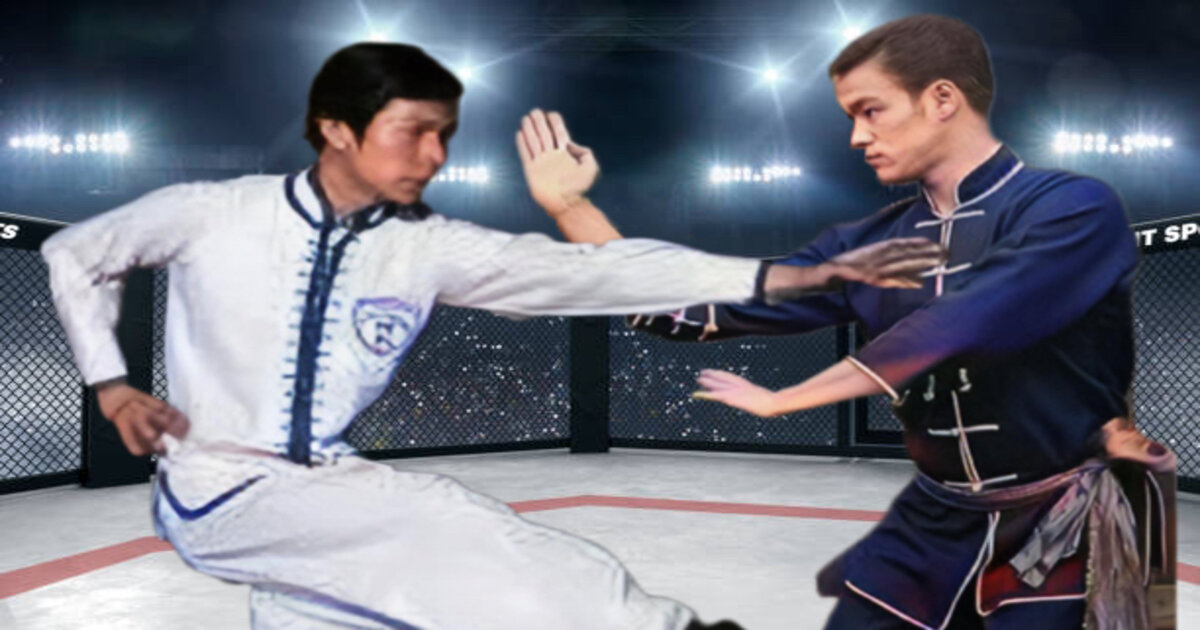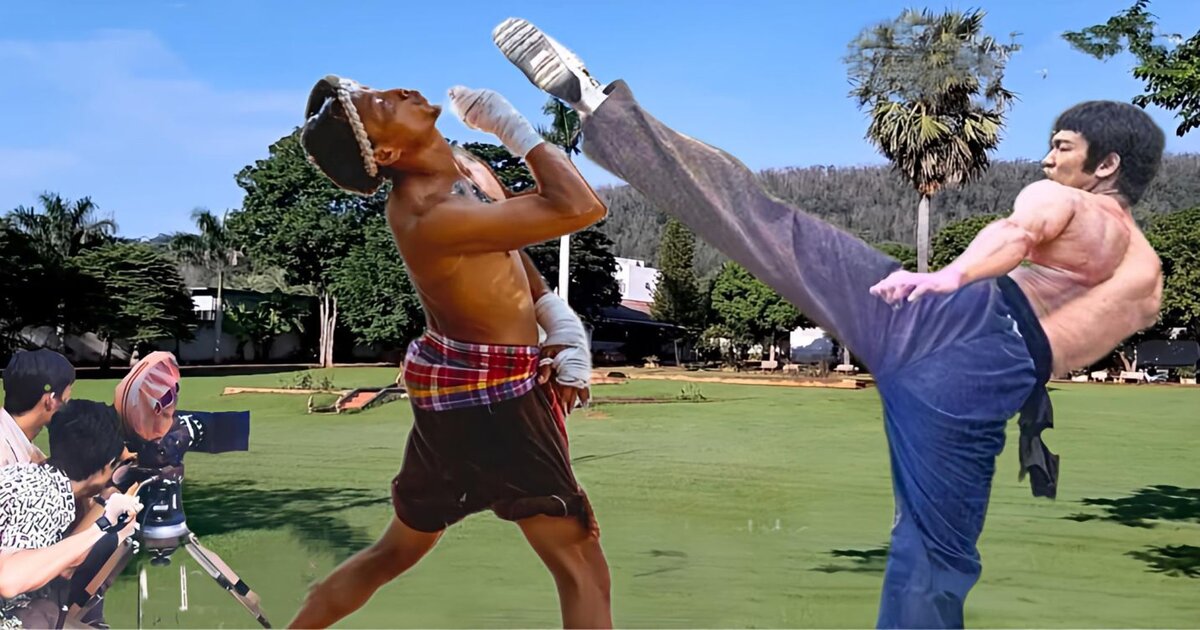
For decades, Bruce Lee has been hailed as the martial arts icon who broke away from traditional styles, especially Wing Chun, to create something entirely new—Jeet Kune Do. His image as a revolutionary who abandoned the old ways is deeply ingrained in martial arts lore. But before his death, Jesse Glover, Bruce Lee’s first American student and closest confidant, finally revealed a truth that complicates that legacy. According to Glover, Bruce Lee never truly abandoned Wing Chun. In fact, the truth might unsettle those who built their understanding of Bruce on the idea that he left tradition behind.

A Friendship That Changed Martial Arts History
In 1959, Bruce Lee arrived in Seattle as a fiery, determined young man with a passion for martial arts and a need to prove himself. He soon met Jesse Glover, a fellow martial arts enthusiast and former judo practitioner. Glover was immediately struck by Bruce’s speed, creativity, and power, and the two began training together in informal settings—parking lots, basements, backyards. There were no uniforms, ranks, or ceremonies—just pure experimentation. As they grew closer, Bruce began shaping his early ideas, blending Wing Chun techniques with Western boxing, fencing, and anything else that worked. But from the beginning, Jesse noticed that Bruce wasn’t discarding Wing Chun—he was building on it.
“Bruce never abandoned Wing Chun… he just stopped talking about it.” – Jesse Glover

More Than Technique—A Shared Mission
Glover became more than a student; he was Bruce’s sounding board and closest friend in America. They spent hours discussing martial theory, combat efficiency, and the limits of traditional styles. Bruce’s mind was constantly questioning and modifying, but even as he criticized certain aspects of Wing Chun, he always returned to its core principles—especially centerline theory. Despite appearances, Bruce never let go of Wing Chun; he simply reshaped it. The contradiction between what Bruce said publicly and what he practiced privately grew more apparent to Jesse. It wasn’t rebellion—it was transformation.
“A punch is just a punch until you understand it. Then it’s everything.” – Bruce Lee

The Roots in Hong Kong —A Young Rebel Emerges
Bruce’s deep connection to Wing Chun began in his teens, under the legendary Ip Man. Though he excelled quickly, his independent streak caused friction among peers and even his seniors. Some resented his success and allegedly withheld parts of the system from him, which deeply wounded Bruce. His obsession with practicality led him to experiment even then, mixing boxing footwork with Wing Chun’s trapping and close-range strikes. The seeds of Jeet Kune Do were already being sown, but the soil was undeniably Wing Chun. He wasn’t rejecting his past—he was wrestling with it.
“To me, the extraordinary aspect of martial arts lies in its simplicity. The easy way is also the right way.” – Bruce Lee

A Personal Battle Hidden in Plain Sight
As Bruce rose to fame, his public rejection of traditional martial arts—especially Wing Chun—stunned the community. He often criticized rigid forms and “dead patterns,” and spoke of creating a formless, adaptive system. But Jesse Glover saw the truth behind the curtain: Bruce often trained privately using Wing Chun drills and techniques. He wasn’t attacking the system—he was attacking stagnation. To Bruce, tradition had to evolve or be left behind. His famous phrase “Be like water” wasn’t about forgetting your roots, but letting those roots flow into new territory.
“Adapt what is useful, reject what is useless, and add what is specifically your own.” – Bruce Lee

Silent Witness to the Duality
For years, Jesse Glover remained quiet while others argued about Bruce Lee’s legacy. He watched as Bruce’s public image became more myth than man. But behind closed doors, Bruce still practiced Wing Chun—sometimes in his garden late at night, sometimes in his garage with the wooden dummy no one else saw him use. Jesse kept the secret, not out of shame, but out of respect for Bruce’s complexity. He saw a man who hadn’t abandoned his art, but was still in conversation with it. And sometimes, Bruce’s silence was louder than his public statements.
“Bruce was always evolving, but Wing Chun was the anchor he never let go of.” – Jesse Glover

The Wounds That Shaped a Legend
Jesse believed Bruce’s apparent rejection of Wing Chun was rooted in pain more than rebellion. The resentment from peers, accusations of not completing the system, and the constant attacks from Hong Kong traditionalists weighed heavily on Bruce. In public, he acted unaffected. But in private, Jesse saw the toll—Bruce would reject a move that looked too much like Wing Chun, only to practice it alone later. These weren’t contradictions—they were emotional scars.
“You must be shapeless, formless, like water… water can drip and it can crash. Be water, my friend.” – Bruce Lee

The Confession That Changed Everything
In the final years of his life, Jesse Glover finally spoke up. In interviews and private conversations, he shared that Bruce never truly abandoned Wing Chun—he simply stopped talking about it. Lee’s private sessions often began with Wing Chun fundamentals, and even his most famous techniques—like the one-inch punch—were rooted in Wing Chun’s principles. According to Glover, Bruce’s criticisms were aimed at blind loyalty to systems, not at the systems themselves. The skeleton of Jeet Kune Do, he said, was Wing Chun—just dressed in modern clothes.
“They think I’m against tradition. I oppose traditions that do not change.” – Bruce Lee (as recalled by Jesse Glover)

Seeing the Whole Picture
Jesse Glover made one final plea: don’t reduce Bruce to a rebel. Understand him as a complete martial artist—one who respected his roots even as he reshaped them. Jeet Kune Do wasn’t created from nothing. It was forged from pain, frustration, deep thought, and a love for the art that raised him. Jesse’s words didn’t destroy Bruce’s image. They made him human again. And that’s how he should be remembered.
“He wasn’t trying to destroy Wing Chun. He was trying to make sure it survived.” – Jesse Glover

Glover’s last message was clear: don’t use this to attack Bruce, use it to understand him. Bruce Lee was not a man who rejected tradition, but one who tried to evolve it. He respected his teachers and past, even while tearing down the dogma that held others back. His goal was never to destroy Wing Chun—it was to make sure it survived by adapting. To truly honor Bruce, we must embrace the full picture: a revolutionary who never stopped being a traditionalist at heart.








